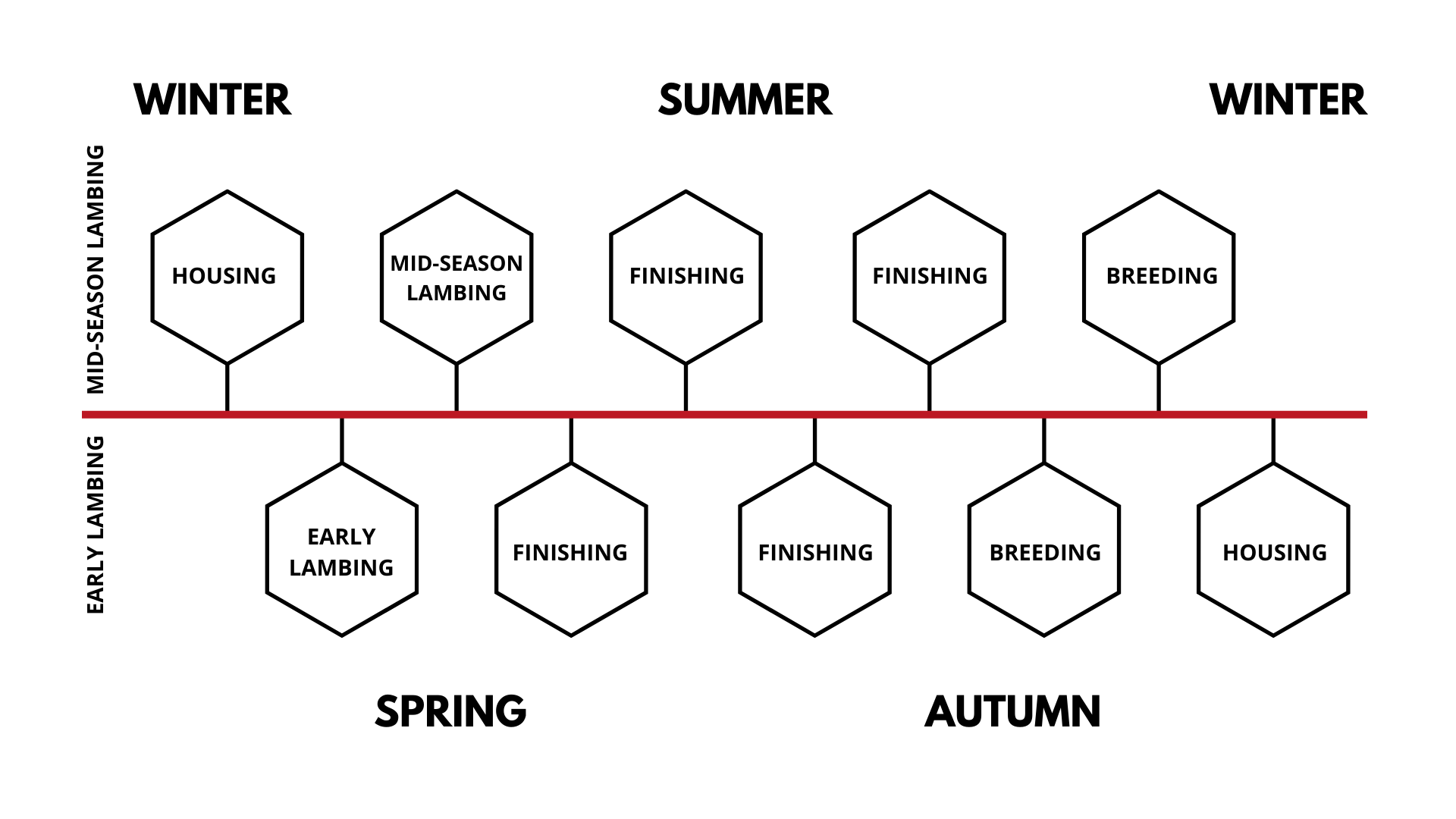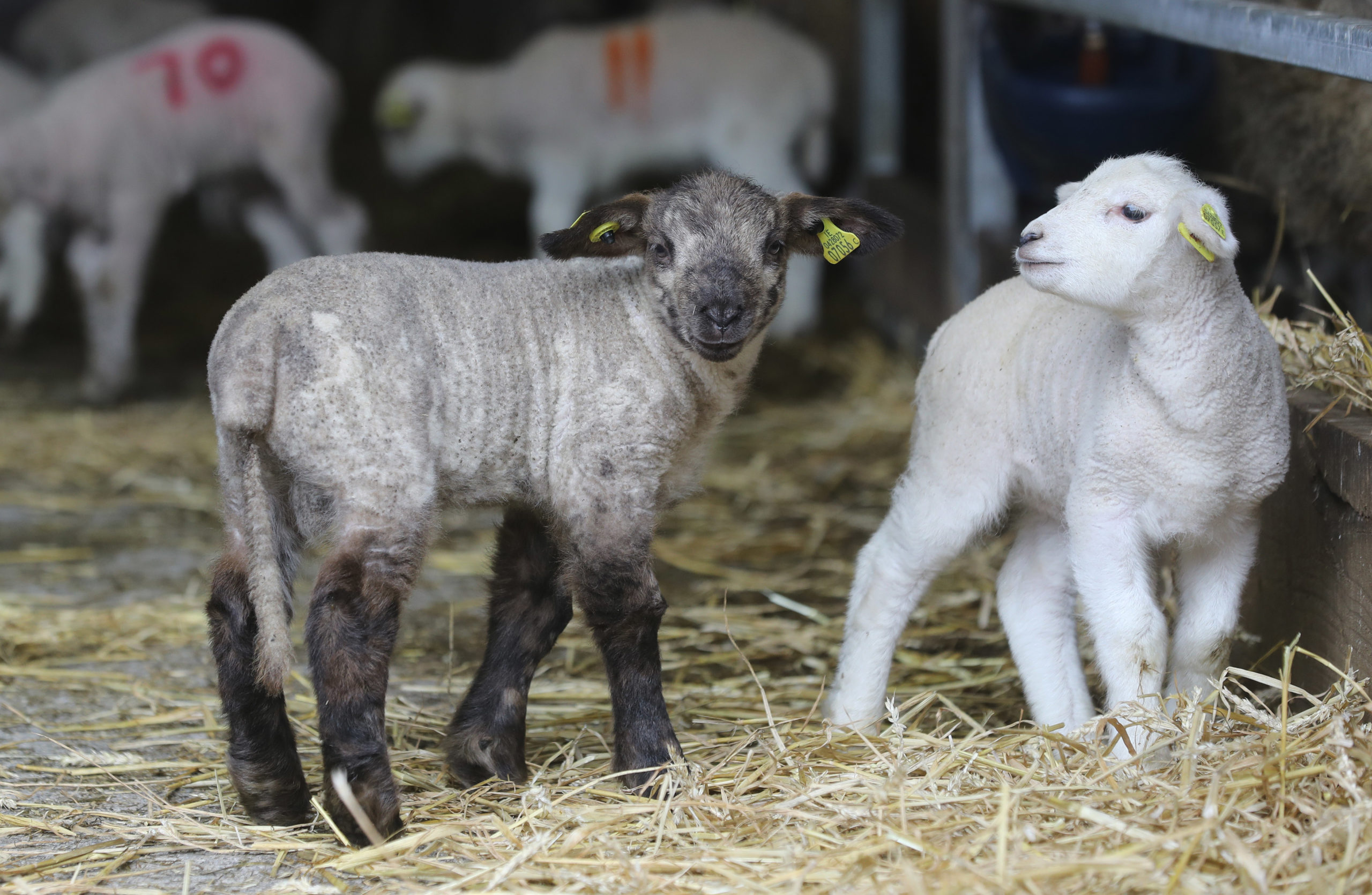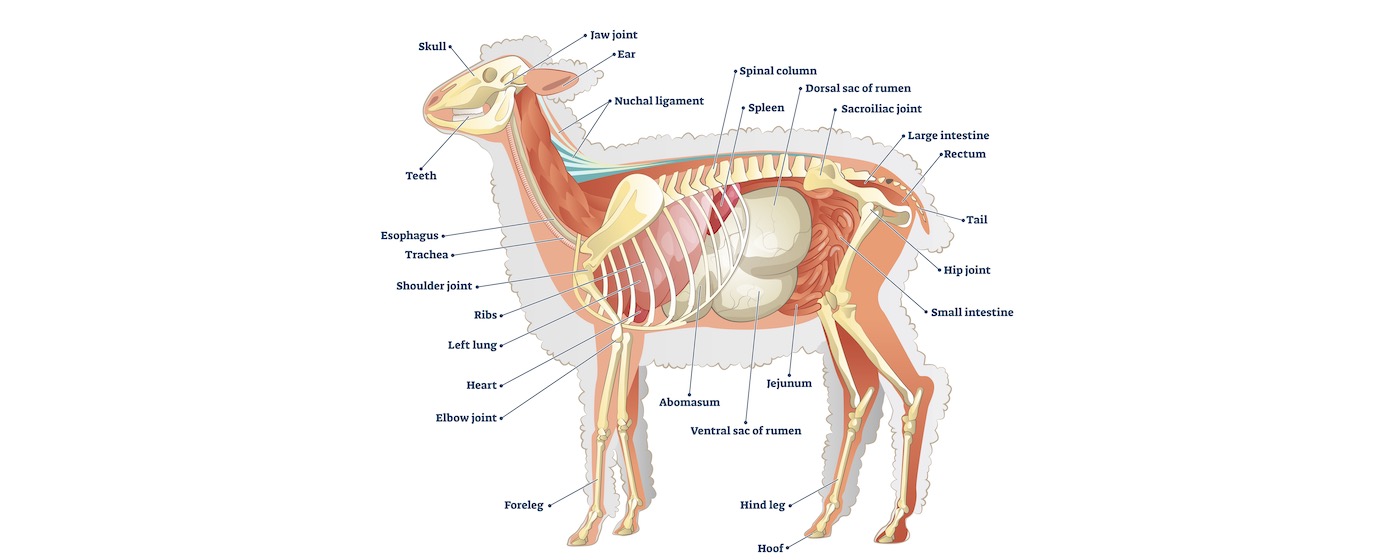Sheep
Spring is a busy time for sheep farmers with lambing typically from late January to mid-March. A ewe’s gestation is 5 months minus 5 days, meaning breeding occurs in the autumn. Newborn lambs usually weigh 2-4kg. The target output per ewe is typically 1.6 lambs; most ewes usually have one, sometimes two and triplets occur occasionally.
Most lambing takes place indoors due to the reduced risk of lamb chill and predation by wild carnivores.

What do sheep eat?
When ensuring adequate nutrition for sheep, there are two main diets that need to be accounted for: pregnant ewes and lambs. The emphasis in Ireland for all ruminants is on low-cost, high quality grass and grass derivatives (hay and silage).
Clean, freshwater is necessary for both. Sheep will consume anything from 0.5 to 5 gallons of water per day depending on their size.
Pregnant ewes Approximately 80% of the growth of a lamb takes place in the final 6-8 weeks of pregnancy. During this time, ewes are vulnerable. The rapid growth of the lambs reduces the feed intake of ewes and can be life threatening if concentrates are not used e.g. twin lamb disease. Both high quality forage and concentrates are required to maintain the ewes’ body condition and to ensure proper mammary gland and colostrum development. Typically 18-20% crude protein and mineral supplemented feed is sufficient. The quality of ingredients is also important, soya bean meal at 20% is appropriate for late pregnancy. Ewes must be introduced to concentrates slowly.

What do lambs eat?
Up to five weeks Lambs are dependent on their mothers milk during this period. As with calves, colostrum is extremely important in the early days. During this stage, lambs can be introduced to concentrates in the form of lamb crumb.
Five weeks - weaning Age of weaning varies. Once a lamb is consuming approx. 250kg of concentrates per day, they can be weaned off milk. At this stage, the ewes can be taken off concentrates and put on forage (fresh grass is best).
Breeds of Sheep
Blackface Mountain
Blackface Mountain
Can have a completely black face or a black and white face. They are low in size and bodyweight. They are hardy and well suited to uphill conditions. They are very good mothers and mostly single lambs. Their wool is very coarse and is most suited to carpet making.
Cheviot
Cheviot
Are the preferred breed in County Wicklow. They are medium in size and weight. They are most suited to fertile hills and produce good quality wool. They are known for their mothering abilities and mainly produce single lambs.
Border Leicester
Border Leicester
Are very distinct in appearance with a white body and ears that stand upright on their heads. They are a maternal breed of medium to large size. They mostly produce twins and are a good milk producing animal.
Belclare
Belclare
Are medium size breed. They are a newer breed first introduced to Irish farmers in 1982. Since then, a lot of work has gone into the breed and this has strengthen its lambing abilities. They produce fleshy lambs and are good mothers.
Texel
Texel
Are a medium size breed with very good body shape (conformation). They produce leaner lambs and have a moderate number of twins.
Galway
Galway
Are a maternal breed with very large size and bodyweight. They have distinctive wool growth on their head and legs. The breed was developed in the west of Ireland and is mostly used for meat. They mostly produce single lambs.
Other Breeds
Other Breeds
Other breeds of Sheep include; Bluefaced Leicester, Charollais, Beltex, Jacob, Oxford Down, Dorset Horn and Rouge de L’Quest.
Suffolk
Suffolk
Are very distinctive with black faces and legs and a predominantly white body. They are medium in size and are early maturing & early finishing. They have a good body shape (conformation) and are favoured for wool production. They usually have a moderate number of twins and occasional triplets.
Products from sheep
Sheep production is the fourth most important animal enterprise in Ireland. The most important product we get from sheep is meat, i.e. Lamb. Meat is an important component of our diets. Lamb and mutton supply us with many of the vital vitamins and proteins that we need to stay healthy. Lamb is the meat from sheep that is less than one year old while mutton is the meat from a sheep that is over one year of age.
Wool is another product that sheep are best known for. Wool is widely used in clothing from knitwear such as socks and jumpers to cloth used for suits and costumes. It is also used in the furniture trade both for making chair covers and for upholstery. Many of the better carpets produced traditionally and today are made from wool.
Sheep milk is used to make yogurts, butter and ice-cream. Sheep’s milk is significantly higher in milk solids, fats and protein and contains roughly double the amount of fat than milk from a cow or goat. Hence, why it is perfect for making cheese and yogurts products.
Fun Fact: Some of the world’s most famous cheeses were made from sheep’s milk such as Feta, Ricotta and Roquefort.
Anatomy of a Lamb

Lamb nutrition
An average portion of lamb contains 50% of the daily protein recommendation for the average adult. Protein is important for the creation and repair of the bodies cells and aids in growth and development.
Lamb contains B3 and B12, important vitamins in the bodies metabolism and nerve functioning.
Iron in red meat, such as lamb, is the most easily absorbed form of dietary iron. Iron is an essential ingredient for oxygen transportation around the body.
Lamb is high in zinc. Both zinc and iron have important roles in maintaining a strong immune system.